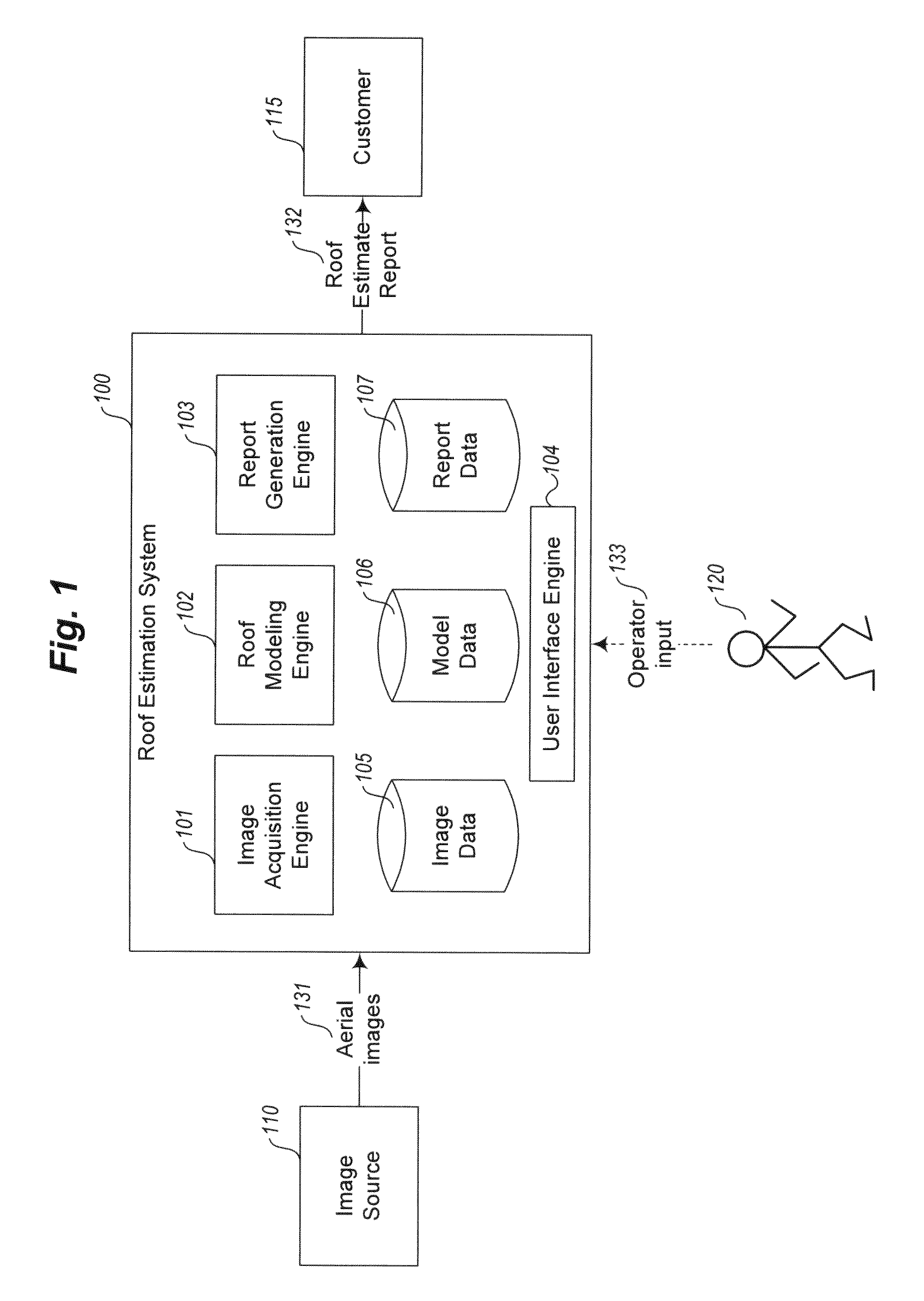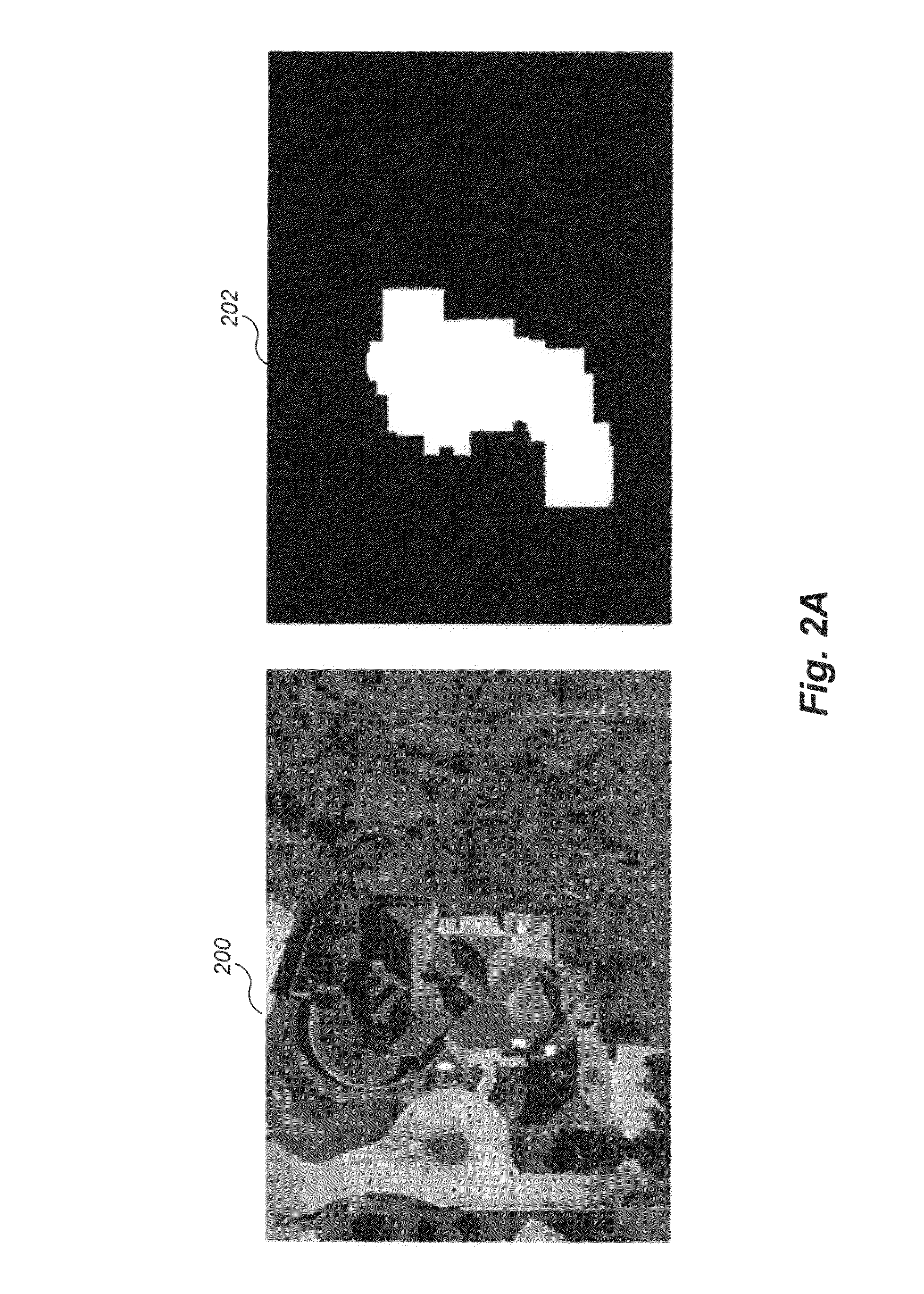Automated roof identification systems and methods
a roof identification and automatic technology, applied in the field of automatic roof identification systems and methods, can solve the problems of time-consuming and laborious removal of the owner or key person on the current job site, and the prohibitive time for travel and the cost of commuting
- Summary
- Abstract
- Description
- Claims
- Application Information
AI Technical Summary
Benefits of technology
Problems solved by technology
Method used
Image
Examples
first embodiment
[0046]FIGS. 2A-2D illustrate data sources and process sampling employed in a first embodiment trained on multiple historical images. In this embodiment, historical data including multiple images having known roof areas are used. The roof areas may be known in various ways, such as via previous human and / or machine analysis.
[0047]FIGS. 2A and 2B illustrate example historical data. In particular, FIG. 2A illustrates an example image 200 and a corresponding mask 202. FIG. 2B illustrates another example image 204 and a corresponding mask 206. The masks 202 and 206 indicate (in white) which sections of the image are roof areas and indicate (in black) which sections of the image are non-roof areas.
[0048]FIGS. 2C and 2D illustrate sampling techniques used during the determination of image measures. As part of the training process used in the first embodiment, each of the historical images is processed by determining, for each pixel in the image, one or more measures within a moving (N×M) s...
second embodiment
[0050]FIG. 2F illustrates example image measures (features) used during training. The image measures can be broadly classified into localized measures and neighborhood measures. Localized measures describe image textural characteristics at a particular processing point (e.g., a pixel at the center of one of the N×M sampling windows described above). Example localized measures may include surface fractal analysis, wavelet coefficients, and topological contour complexity variation (TCCV). Neighborhood measures include ranging related neighborhood measures that describe the organization of structure surrounding a particular processing point. Example neighborhood measures include radial complexity and radial organization variation. FIG. 2F depicts neural networks 230a-230e that are trained based on image measures or separable descriptor groups derived from image measures determined as described above for either the first or Each of the neural networks 230a-230e is a full associative n-...
PUM
 Login to View More
Login to View More Abstract
Description
Claims
Application Information
 Login to View More
Login to View More - R&D
- Intellectual Property
- Life Sciences
- Materials
- Tech Scout
- Unparalleled Data Quality
- Higher Quality Content
- 60% Fewer Hallucinations
Browse by: Latest US Patents, China's latest patents, Technical Efficacy Thesaurus, Application Domain, Technology Topic, Popular Technical Reports.
© 2025 PatSnap. All rights reserved.Legal|Privacy policy|Modern Slavery Act Transparency Statement|Sitemap|About US| Contact US: help@patsnap.com



